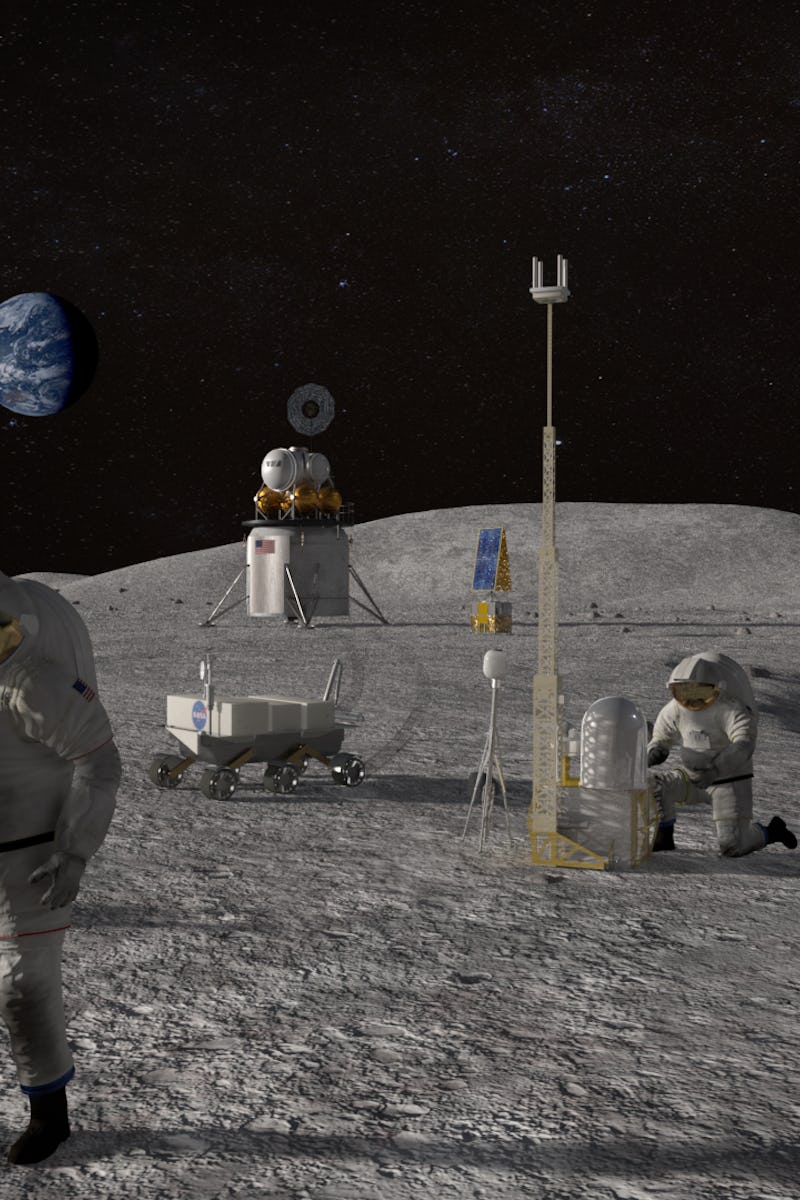
The Moon may be Earth's closest natural satellite, but that doesn't mean that it's easy to get to. It takes about three days to make the 238,900-mile journey to the Moon, traveling through the depths of space.
Before NASA's biggest mission in decades, a critical update
Ahead of its upcoming Artemis mission, NASA is upgrading its navigation system so it can reach the Moon.
by Passant RabieAs NASA prepares for its upcoming Artemis mission, which will return humans to the lunar surface for the first time in over 50 years, the space agency needs to upgrade its navigation system to make for a smoother ride in the cosmic void.
This week, NASA announced that its team of engineers from the Space Communications and Navigations (SCaN) program are developing a new, more accurate navigation system for the Artemis mission. The new system will improve timing, precise and responsive maneuvers, reduce cost, and allowing for autonomous, onboard orbit and trajectory determination.
NASA will upgrade its space navigation system to ensure a smoother ride for its Artemis astronauts.
Today, spacecraft flying below about 1,800 miles in altitude can rely on Global Navigation Satellite System (GNSS) signals, which are a constellation of satellites that provide signals from space that transmit positioning and timing data to receivers located down on Earth.
For us down on Earth, GNSS signals enable our navigation systems and are also used for banking transactions, cellular networks, and telecommunications. Meanwhile, while flying through space, spacecraft use these signals to determine their location, velocity, and time the same way we use our phones to navigate on Earth, according to NASA.
What is GNSS and how does it work?
The problem — However, as spacecraft travel beyond 1,800 miles in altitude, the GNSS signals are not able to reach them. Instead, the spacecraft begin relying on signals received from the opposite side of the Earth, extending over the planet.
The solution — But NASA engineers believe they have found a way to extend the GNSS signals as they reach for the Moon.
Dr. Ben Ashman, a NASA navigation engineer, said in a statement: “Our simulations show that GPS can be extended to lunar distances by simply augmenting existing high-altitude GPS navigation systems with higher-gain antennas on user spacecraft.
"GPS and GNSS could play an important role in the upcoming Artemis missions from launch through lunar surface operations.”
Rather than receiving signals from a single GNSS constellation, simulations created by NASA's team of engineers have shown that that receiving signals from different constellations at the same time would improve the mission’s ability to calculate its location.
Beyond the simulations, NASA is planning on testing this out in real life with the upcoming Lunar GNSS Receiver Experiment (LuGRE). The space agency is planning to land LuGRE in the Moon's Mare Crisium basin in the year 2023.
Once it's on the lunar surface, the spacecraft will be the first to receive GNSS signals on the Moon.
The data gathered from this, hopefully successful, experiment will be used to develop GNSS systems that can be used by future missions to the Moon.
The Artemis mission aims to land humans on the Moon no earlier than the year 2024.
The purpose of the Artemis program is not only to return humans to the Moon, but establish a presence on the orbiting rock and use the Moon to propel us to further destinations — such as Mars:
This article was originally published on